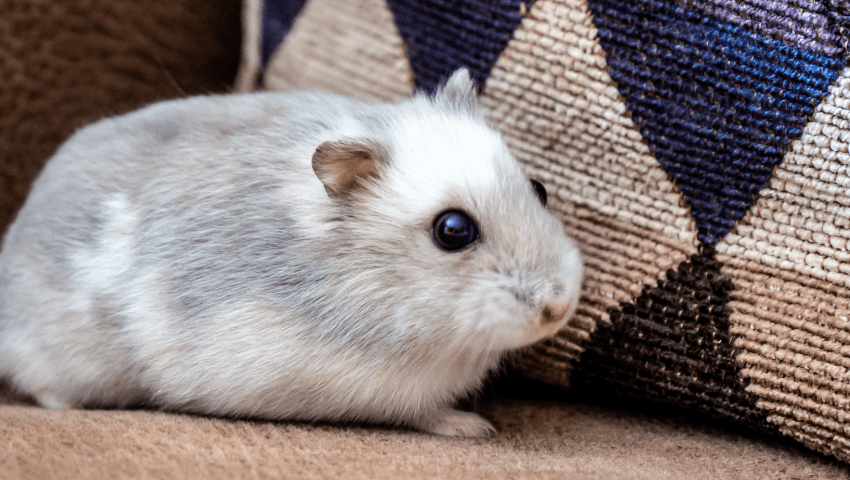Characteristics of Various Hamster Breeds
Hamsters are charming, small pets that have captured the hearts of many animal lovers. There are several breeds of hamsters, each with distinct characteristics, behaviors, and care needs. Understanding these differences can help prospective pet owners choose the perfect companion. This article will explore the various hamster breeds, highlighting their unique features and providing insight into their ideal care.
Common Hamster Breeds
There are several common hamster breeds, each with distinct personality traits and physical characteristics. Knowing these breeds enables potential owners to select a hamster that aligns with their lifestyle and preferences.
Syrian Hamster
The **Syrian hamster**, also known as the golden hamster, is one of the most popular breeds. They can grow up to 6 inches long and are typically easy to handle due to their gentle nature. They exhibit a solitary behavior, meaning they prefer to live alone. Their fur comes in various colors and patterns, making them visually appealing as well. To care for a Syrian hamster, provide a spacious cage with a hiding place, a variety of toys, and a balanced diet that includes pellets, fresh fruits, and vegetables.
/GettyImages-469029193-58179c5d5f9b581c0b86ab9b.jpg)
Dwarf Hamsters
Dwarf hamsters, including the **Roborovski** and **Campbell’s dwarf hamsters**, are smaller in size, measuring about 2 to 4 inches long. They are social animals and can often be kept in pairs or small groups. Their playful nature makes them enjoyable to watch. However, their small size also means that they require a more gentle approach when handling them. A good habitat for dwarf hamsters includes nesting material and plenty of opportunities for climbing and exploration.
Physical Features of Hamster Breeds
The physical features of hamsters can vary greatly across different breeds, making each type unique. These features affect not only their appearance but also their behavior and care.
Size and Weight
The size and weight of hamsters are significant characteristics that influence their housing needs. For example, while a Syrian hamster generally weighs around 5-7 ounces and is about 6 to 7 inches long, dwarf hamsters typically weigh between 2-4 ounces and can range from 2-4 inches in length. This size difference highlights the need for appropriately sized cages; larger cages are necessary for Syrian hamsters, while smaller setups can suffice for dwarf varieties.
Fur and Color Variations
Hamsters exhibit a wide range of fur types and colors. Syrian hamsters come in various patterns, including banded, mottled, and self colors. Dwarf hamsters might have variations like the Winter White’s snowy white fur during certain seasons. The different coat types not only add to their aesthetic appeal but also can require varying grooming needs—long-haired breeds like the Syrian may need more regular brushing to avoid matting.
Behavior and Temperament of Hamster Breeds
Understanding the behavior of different hamster breeds is crucial for creating a suitable environment for them. Each breed exhibits distinct temperamental traits that can affect interactions with humans and other pets.
Sociability and Handling
The Syian hamster typically prefers solitary living, while dwarf hamsters can thrive in social environments. Dwarf hamsters are often more energetic and may enjoy playtime with other hammies. When handling hamsters, it’s essential to take note of their breed-specific needs; Syrian hamsters usually tolerate gentle handling well, while dwarf hamsters may be a bit skittish and require patient acclimation to human interaction.
Nocturnal Behavior
Like most rodents, hamsters are naturally nocturnal, which means they are most active at night. This behavior may pose challenges for hamster owners, as their energetic play and activities often take place during the late evening or early morning hours. By providing a stimulating environment with adequate hiding spaces and blow-up toys, owners can encourage healthy nocturnal habits while minimizing disruption during their hamster’s active hours.
Choosing the Right Hamster Breed for You
Selecting the right hamster breed depends on various factors, including an owner’s experience, living arrangements, and available time for interaction. Here are key considerations when choosing a hamster breed:
Experience Level
For first-time hamster owners, the **Syrian hamsters** may be the best option due to their friendly nature and more straightforward care requirements. On the other hand, experienced owners might enjoy the challenge and social interactions that come with keeping dwarf hamsters, which can have more dynamic behaviors.
Living Space
Consider your available space when choosing a hamster breed. Syrian hamsters require larger habitats, while dwarf hamsters can thrive in more compact spaces. It’s essential to ensure that the selected hamster breed has sufficient room to exercise, nest, and explore without feeling confined.
Key Takeaways
- There are several hamster breeds, each with distinct characteristics and care needs.
- Syrian hamsters are solitary, larger, and generally easier to handle.
- Dwarf hamsters are smaller, more social, and can be kept in groups.
- Different breeds have varying physical features, including size, weight, and coat types.
- Hamsters are nocturnal; understanding their behavior can enhance your pet ownership experience.
FAQ
1. How often should I clean my hamster’s cage?
It is recommended to clean your hamster’s cage at least once a week. Change bedding, remove uneaten food, and scrub the housing to keep your hamster healthy and odor-free.
2. Can hamsters live together?
Generally, Syrian hamsters should be kept alone due to their territorial nature, while dwarf hamsters can often live together harmoniously in pairs or small groups, provided they have enough space.
3. What do hamsters eat?
Hamsters require a balanced diet consisting primarily of high-quality pellet food, supplemented with fresh fruits, vegetables, and occasional treats like nuts or seeds.
4. How long do hamsters live?
Most hamsters live between 2 to 3 years, but some can live longer with proper care. The lifespan can vary by breed; for example, Syrian hamsters typically have a longer lifespan than dwarf breeds.
5. How can I tell if my hamster is happy?
A happy hamster engages in play, explores its environment, and exhibits normal grooming behavior. Signs of unhappiness or stress may include excessive hiding, barred teeth grinding, or biting at the cage.
